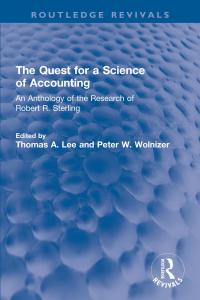Answered step by step
Verified Expert Solution
Question
1 Approved Answer
As the audit neared completion, Sylvia reviewed an audit comment Kia had written a statement concerning some accounts payable checks that lacked complete endorsement by
As the audit neared completion, Sylvia reviewed an audit comment Kia had written a statement concerning some accounts payable checks that lacked complete endorsement by the payees. Both Sylvia and Kia recognized that in some situations and some organizations, lessthanperfect endorsements were not a critical concern, but these checks were payable to dual payees, and the endorsement of each payee was required. Sylvia asked Kia to make some photocopies of the examples so the evidence would be available for the audit closeout meeting with management.
Kia returned minutes later with a puzzled expression. I pulled the examples, she said, but look at these! Kia placed five checks on the desk in front of Sylvia. What do you make of these? she asked. Make of what? asked Sylvia.
Do you see it The handwriting on all the endorsements looks the same, even though the names are different! And these are manual checks, which in this system usually means they were pushed through the system as rush payments.
They do look similar, Sylvia replied, but a lot of people have similar handwriting.
It hit Kia and Sylvia at the same time. All six checks had been cashed at the same EXpress Cash store less than miles from the home office, even though the payee's mailing address on one of the checks was over miles away!
Kia decided to pull the supporting documentation for the payments but found none. She then identified other payments to the same payees and retrieved the paid checks. The endorsements did not look at all like the endorsements on the suspicious checks. Kia located other examples of the payees signatures in the lease, correspondence, and personnel files to determine which endorsements were authentic. The checks with supporting documentation matched other signatures on file for the payees.
Sylvia and Kia decided to assess the extent of the problem while investigating quietly. They wanted to avoid prematurely alerting perpetrators or management that an investigation was underway. With the help of other internal auditors from the parent company, they worked after normal business hours and reviewed endorsements on paid checks in three nights. Ninetyseven checks that had been cashed at the EXpress Cash store were identified.
Still, all Sylvia and Kia had were suspicions no proof. They decided to alert executive management at the subsidiary and get their help.
Next Steps:
The subsidiary had little experience with dishonest and fraudulent activity, so it had no formalized approach or written fraud policy. Sylvia and Kia, therefore, maintained control of the investigation all the way to the conclusion. With the help of operating management, the auditors contacted carefully selected payees. As is often the case involving fictitious payments to real payees, the real payees had no knowledge of the payments and had no money due to them. The auditors obtained affidavits of forgery.
To identify the perpetrator, the auditors documented the processing in more detail than in the original preliminary survey for the routine audit. Eight people had access, opportunity, and knowledge to commit fraud. The auditors then prepared a personnel spreadsheet detailing information about every employee in the department. The spreadsheet revealed that John Cullins had evidence of severe financial problems in his personnel file. It also showed that Johns former residence was three blocks from the EXpress Cash store.
Armed with the affidavits of forgery, the auditors advised management that the case was no longer merely based on suspicions. Along with members of operating management, the auditors confronted the EXpress Cash store owners to learn why they had cashed the checks and who had cashed them.
The EXpress Cash store manager answered, Oh we cash those for John Cullins. He brings in several checks a month to be cashed. He used to live down the street. Never had one of those checks come back! As a result, John was confronted and confessed. The fully documented case was turned over to law enforcement. John pled guilty and received a probated sentence in return for full restitution, which he paid.
Provide an original and substantive summary of the facts of the case, applying the concepts from the assigned reading.
Explain the motivation to start a new internal audit function for the company.
Analyze John Cullins motivation factors for fraud.
Analyze the relationship between Sylvia Tribi and John Cullins and how that relationship might influence the fraud investigation outcome.
Examine the role management plays in the investigation.
Investigate the EXpress Cash store manager's role and motivations in the fraud scheme.
Step by Step Solution
There are 3 Steps involved in it
Step: 1

Get Instant Access to Expert-Tailored Solutions
See step-by-step solutions with expert insights and AI powered tools for academic success
Step: 2

Step: 3

Ace Your Homework with AI
Get the answers you need in no time with our AI-driven, step-by-step assistance
Get Started


